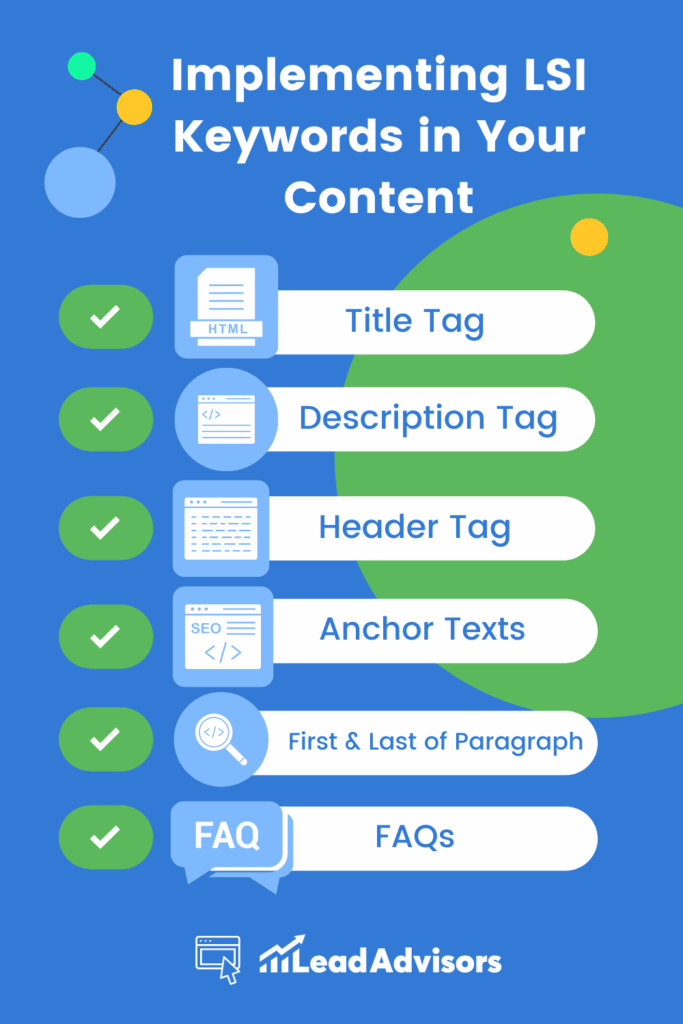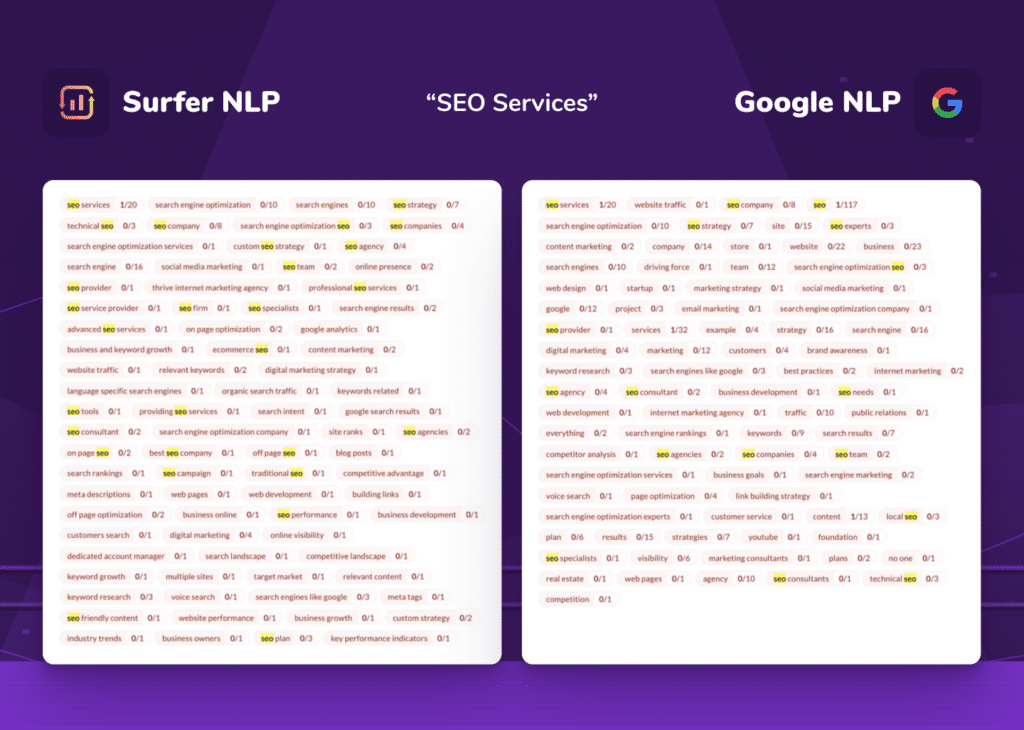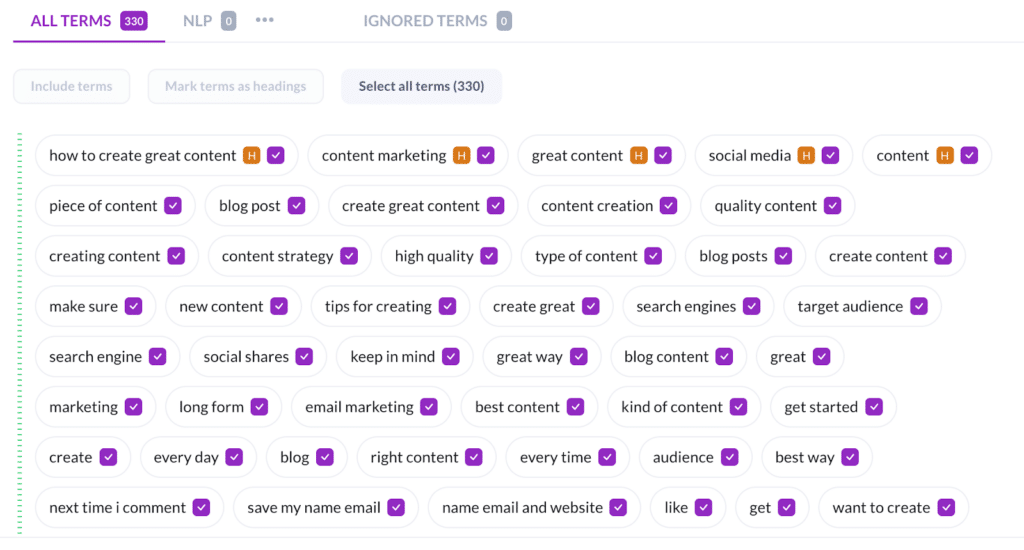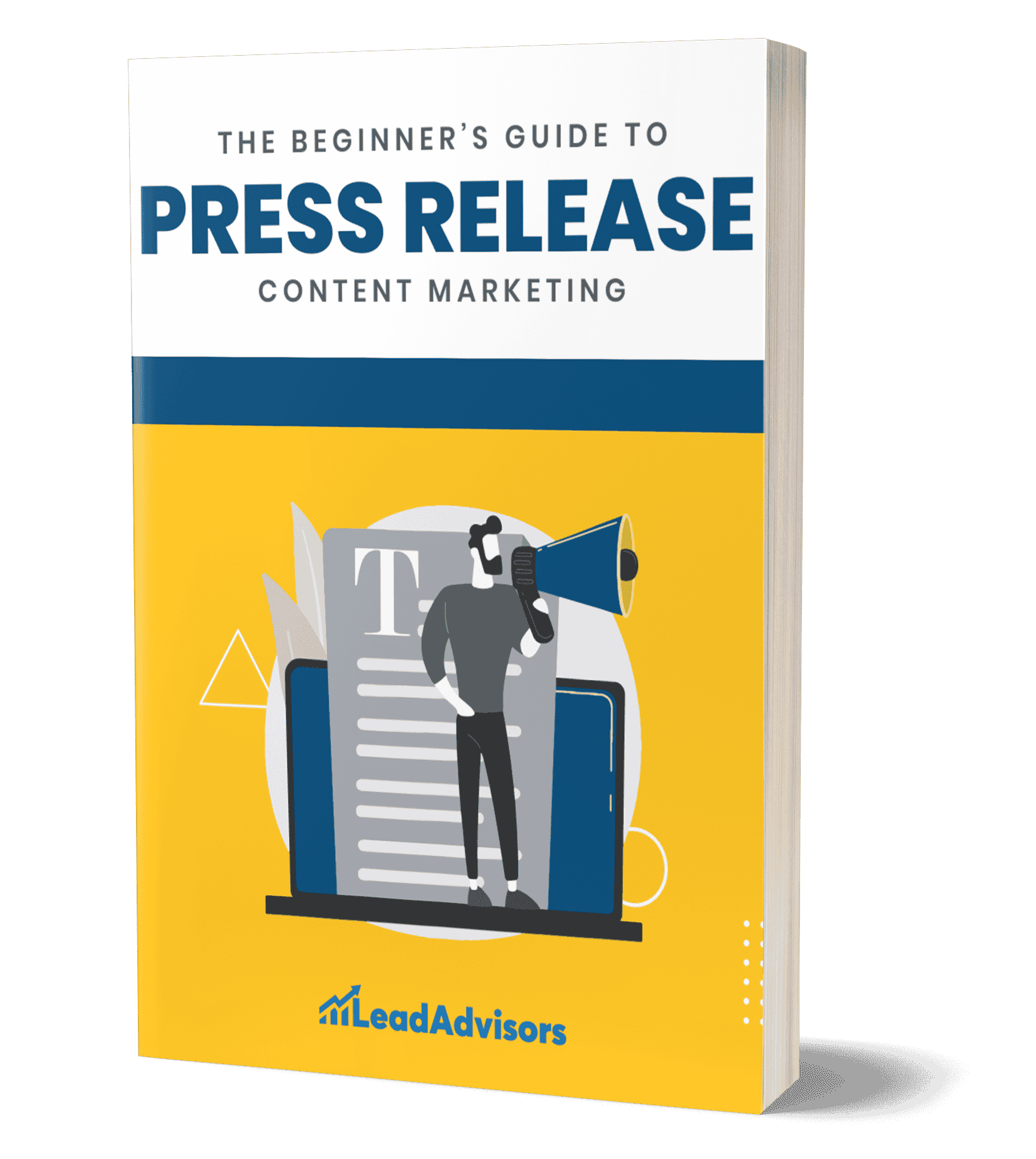Natural Language Processing (NLP) and Latent Semantic Indexing (LSI) are two powerful techniques used to extract meaning from text. LSI and NLP are often confused as they often serve similar purposes. However, the two important differences must be understood to take full advantage of their capabilities.
To understand the differences between LSI and NLP, it helps to start by understanding what each one does. This guide will teach you everything you need to know about LSI vs. NLPs to create useful, high-quality content for your audience.
Let’s not waste more time and begin with the big picture of the semantic web.
What is the Semantic Web?

The semantic web is a vision of the Internet as a data-driven, interconnected network that enables computers to understand the meaning and context of information on the web. It bridges the gap between human-readable and machine-readable content, allowing machines to process data more easily.
In essence, it is an extension of the current web in which machines can access static pages and dynamic data stored across multiple sources. The Semantic web utilizes Natural Language Processing (NLP) and Latent Semantic Indexing (LSI) to store content in a way that both computers and humans can understand. They can better understand how these data are related by providing computer programs with richer information about documents on websites.
The goal of the Semantic Web is to provide a better understanding between different computers and systems by providing them with structure and meaning. This will enable applications to access more information faster and increase the accuracy of search results. Furthermore, it will allow computers to carry out complex tasks more efficiently, such as recognizing patterns across large amounts of data or classifying objects based on their properties.
How do Search Engines understand context?
It is not enough for a search engine to understand keywords; it must also understand the context around those words. By understanding context, search engines can provide more accurate results for queries.
Context can encompass many things, from the tone of voice to the relationships between words on a page. For example, if you type in “Apple” into a search engine, it needs to be able to differentiate between an apple as a fruit and Apple as an electronic company. Search engines use various techniques, such as natural language processing (NLP) and Latent Semantic Indexing (LSI).
Let’s start with the latter.
What Is Latent Semantic Indexing (LSI)?
Latent Semantic Indexing (LSI) also known as Latent Semantic Analysis (LSA) is a natural language processing method that extracts keywords and phrases from text documents. It is used to search for and categorize information and identify relationships between concepts in the text. LSI uses a statistical technique called singular value decomposition (SVD) to map the relationships between different pieces of information in a document, allowing it to conclude those pieces of information.
In practical terms, when someone searches for content related to a specific topic, LSI can interpret what they are searching for by looking at the context of keywords and phrases used within the query. Unlike traditional keyword-based search engines, which can only match exact words or phrases entered into the search field, LSI allows web users to find relevant content even if they do not use precisely accurate terminology or phraseology.
You May Also Like: How To Post An SEO Friendly Blog?
What are LSI Keywords?

LSI keywords are words and phrases related to the topic of a website or piece of content. These keywords help search engines better understand the context of content on a page and improve its ranking in search engine results pages.
LSI keywords consider how terms relate to each other in various contexts. For example, when someone searches for “car,” they could be looking for information about vehicles, auto parts, auto dealerships, etc. By including LSI keywords such as “vehicle,” “engine,” and “dealership,” you can provide more accurate information about what your web page is about from a semantic perspective. This helps search algorithms understand the topic better so it can rank higher in SERPs.
Why Are Related Keywords Important?

When it comes to SEO, LSI keywords are essential. The following are a few of its key benefits:
- Expand the Scope of Your Content
The addition of LSI keywords can benefit not only SERP ranking but also the quality of content for readers. Including additional terms related to your key topic can provide further detail and insight into your subject matter, resulting in more comprehensive coverage for your audience. Moreover, including LSI keywords will improve readability by providing smoother transitions between topics and ideas within an article or post.
- Attract More Users to Your Page
Are you looking for an effective way to increase your website traffic? Using LSI keywords can be a great tool to help optimize the content on your page and attract more users. By including these words in your content, search engines can better understand what it is about and rank it higher when users search for related topics. This will result in more visitors coming to your site and potentially engaging with your content.
Incorporating LSI keywords into the content on your website is a simple yet highly effective process that requires minimal effort but provides maximum results.
- Boost Your SEO Ranking
If done correctly, LSI can improve your rankings by allowing search engines to understand better what content you’re providing, thereby increasing the chances that it will appear in the top results. Utilizing LSI keywords in your content helps ensure that it is indexed properly and returns accurate results when someone searches with related terms. This not only increases visibility but also boosts credibility as Google takes notice of websites using relevant terminology in their content.
Using LSI keywords will also be able to target long-tail keyword searches more effectively, helping you get more organic traffic from prospective customers who may have never found your webpage otherwise.
Read More: 5 Ways Direct-to-Consumer Brands Can Leverage Media & PR Coverage
How to Incorporate the Right LSI Keywords for Your Content?
By incorporating the right LSI keywords into your site, you can improve the context around your articles to be picked up by search engines more easily. This will subsequently cause better rankings, but how do you utilize LSI keywords in your content?
Identifying LSI Keywords that Suit User’s Intent

Finding LSI keywords that suit each topic are key to creating successful content that comprehensively gives readers the information they need.
You can easily identify a list of related terms using a keyword tool such as Google AdWords Keyword Planner or SEMrush. However, it’s important to remember to choose words that will be used naturally throughout the article, not just ones that match your primary target term. This means looking for variations on the main keyword, such as singular and plural forms, synonyms, and even related topics.
To start, consider how you can determine the intent behind a query and look for relevant terms that could help convey that idea. For example, if someone searches “car dealership,” they may be looking for general information on car dealerships or searching specifically for one nearby their location.
Informational
In order to identify the most fitting LSI keywords for informational purposes, research into user behavior should be conducted prior to implementation. This research should include analyzing trends of the type of queries being made by users when searching for information on your subject. Additionally, reviewing existing content that covers similar topics will give you an idea of which words are commonly used within that niche, allowing you to gain more insight into how potential readers may be searching.
Navigational
This is when users are looking for a specific website, product, or service; they want to “navigate” directly to the correct page. For example, if a user searches’ sneakers’, LSI keywords may include terms such as trainers, shoes, or footwear. This type of keyword is especially important for navigational search queries – those used by users who already know what they want and how to get it. A successful keyword selection should target both the product/service sought after by the user and an action they want to take.
Transactional
When selecting LSI keywords, it’s important to consider transactional searches in particular. Transactional searches are when someone is searching to carry out a specific action, such as buying or booking something. Identifying these types of keyword phrases can help ensure that your content matches up with users with an immediate need, increasing conversions and sales. Look at your customer journey – what words are customers using when they purchase on your website? For transactional searches, where users are looking for something specific such as “buy shoes online,” including the right mixture of LSI terms can be particularly challenging. In this case, adding terms like “affordable,” “discount,” or “free shipping” can help you attract customers who are looking for a good deal.
Commercial
When it comes to identifying commercial-related LSI keywords, one should focus on searching for words and phrases associated with buying or selling goods or services. Using commercial-specific words, such as shop, purchase, buy, or subscribe, and industry-specific vocabulary can help bring more targeted traffic to a website and increase its visibility on search engines. Additionally, long-tail keyword variations—phrases with more than three words—can be even more effective for commercial search results.
Concentrating on LSI Keywords Based on Search Volume

To maximize the success of any SEO campaign, it is important to prioritize certain LSI keywords based on search volume. This allows you to target the most popular words and phrases so that your content can rank higher in search engine results pages.
When choosing which keywords to focus on, it is essential to consider how well they are currently performing in terms of search volume. To do this, you should use a keyword research tool such as Google Trends or Ahrefs Keyword Explorer to determine how many monthly searches a particular keyword receives. You may also want to look at the competition for each keyword to determine whether targeting them would be worth your time and resources.
Implementing LSI Keywords in Your Content

Once you have relevant keywords, implementing LSI keywords into your content is quite simple. These related words provide insight into the topics associated with that keyword, thus giving you an idea of which directions to take when crafting your piece.
Title Tag
One way to include LSI keywords in your content is through title tags. Title tags are HTML elements that provide a short, descriptive summary of a webpage’s contents when it appears in search engine results pages (SERPs). When writing title tags, it’s important to include as many relevant LSI keywords as possible while keeping them concise and accurate.
Description Tag
When adding LSI terms in your description tag, it’s important to think about how you phrase them. You want the phrases you use to reflect the content on the page accurately, so it’s important to include words and phrases that match those used by users when searching for similar topics. It’s also helpful to think about synonyms or related terms when writing descriptions, as this will ensure that all possible queries are covered by at least one of your tags.
Header Tags
Using LSI keywords in your header tags allows you to optimize your articles for higher ranking on search engine results pages (SERPs). Header tags are HTML elements that signal the beginning of a new section or subsection on a web page. They range in size from the most prominent, <h1> tag, down to the smallest, <h6>. When used correctly, they help readers understand what type of content they will find in each section of a web page.
Anchor Texts
Once you have identified some keyword phrases, insert them into your content as “anchor text” links to other pages within your website or blog. When linking internally, include a brief description of where the link is pointing so readers and search engines can more easily identify what they will find when they click through on the link.
The first and last paragraph
When using LSI keywords in your content, it’s important to keep them natural and relevant to the topic at hand. Then work those words into the body of the text naturally; this helps keep it engaging while ensuring relevance.
FAQs
When implementing LSI keywords onto FAQs, businesses should focus on keyword phrases related to their products or services. They should also use synonyms and other related words to provide more specific information about the topic. Additionally, it’s important to optimize the structure of their FAQ page with proper heading tags and subheadings for search engine crawlers to index the content properly. Doing so will help strengthen your website’s ranking power and increase its visibility online.
You May Also Like: How to Boost your eCommerce Visibility on Google
Where Should You Avoid Using LSI Keywords?
When optimizing content for search engines, LSI keywords can be a useful tool. But just like any other keyword strategy, there are some contexts in which the use of LSI keywords might not be ideal. It’s important to understand where and when to avoid using them to maximize your SEO efforts’ impact.
First, it’s important to recognize that LSI keywords should never replace or substitute for primary or targeted keywords in a piece of content. They shouldn’t be used as part of the main title or headline since that’s an area reserved for primary keywords only. This is because LSI keywords may not have enough visibility on their own to draw in viewers from search engine results pages.
Additionally, it’s best not to use too many LSI keywords in one sentence within your article body, as this can make sentences unnecessarily long and difficult to read. For example, if you aim to target a specific audience with your content, then using too many LSI keywords could dilute the message you’re trying to communicate.
Tools and Resources You Can Use To Find LSI Keywords
If you’re a content creator, chances are you know the importance of including Latent Semantic Indexing (LSI) keywords in your work. LSI keywords help search engine crawlers understand the context of your writing, so they can get a better rank of your content in organic search results. You can use many tools and resources to find relevant LSI keywords for any subject or topic.
Google’s Keyword Planner

One great resource is Google’s Keyword Planner tool. Enter any keyword related to your topic, and it will generate a list of related terms and phrases people have been searching for on Google. This allows you to see what language people use when looking for information on a particular topic, which helps inform how you write and structure your content.
Google Autocomplete Feature

One tool that often gets overlooked is Google Autocomplete Feature. This feature allows you to type in a keyword or phrase into the search box, and it will automatically generate related phrases and questions. By exploring these suggested terms, you can uncover various related LSI keywords for your content. Additionally, you can use this tool to monitor changes in popular searches over time so that you know what people are looking for when they enter certain terms into the search engine.
Google Image Tag Suggestions

Google Image Tag Suggestions helps webmasters identify images related to their target keyword that contain other relevant keywords. When you type in a primary keyword, such as “outdoor furniture,” this tool produces a list of related terms like “patio set” or “sun lounge.” Webmasters can easily optimize their content with powerful LSI keywords by selecting these suggested tags for their images. This simple addition can make all the difference in boosting search engine rankings.
SEMrush

One of the best tools for finding LSI Keywords is Semrush. This powerful tool allows users to search keywords and get relevant results, including related topics, topics discussed on social media, top pages competing for those terms, and other useful data points. With Semrush’s keyword research feature, you can easily find related phrases and words that will help boost your SEO rankings by understanding user intent better.
LSI Graph

One of the most useful tools is called LSI Graph. This free search engine optimization tool allows users to input the main keyword and view related semantically related words that could be used in their article or blog post. It provides detailed information on the frequency of use and relevance and synonyms for each keyword. The data provided by LSI Graph makes it easy to choose effective keywords that will improve SEO performance.
AnswerThePublic

One such tool is Answer The Public, which offers an intuitive visual display of all the questions people might have on a given topic. By entering a seed keyword, this powerful tool generates hundreds of related questions that can serve as ideas for creating new content or finding relevant keywords. It also provides alphabetical lists of prepositions, comparative phrases, and other queries that could be used as LSI keywords in your writing.
What is Natural Language Processing (NLP)?
 Natural language processing (NLP) is an area of artificial intelligence that enables machines to understand the meaning of human speech. NLP helps machines identify and interpret natural languages such as English, Chinese or Spanish, allowing users to interact with technology using voice commands. It is a branch of AI that uses algorithms and machine learning techniques to process large amounts of unstructured data to generate meaningful business insights.
Natural language processing (NLP) is an area of artificial intelligence that enables machines to understand the meaning of human speech. NLP helps machines identify and interpret natural languages such as English, Chinese or Spanish, allowing users to interact with technology using voice commands. It is a branch of AI that uses algorithms and machine learning techniques to process large amounts of unstructured data to generate meaningful business insights.
Through NLP, machines can detect patterns from text-based sources such as emails, documents, or webpages, making it possible for them to ‘read’ information and respond accordingly. This technology has become increasingly important in recent years due to its ability to analyze the intent behind customer queries or automatically summarize reports and articles. This way, NLP can help automate tedious tasks and allow employees to focus on more strategic activities.
The evolution of natural language processing
NLP has come a long way since its inception in 1950. NLP is an important component of artificial intelligence, providing the ability to understand and manipulate human language. Over time, technological advances have allowed machines to comprehend more complex tasks with greater accuracy and speed.
NLP has made leaps and bounds in its development in the past seventy years. Early efforts focused on translating written words from one language to another; however, now, NLP can comprehend context, sentiment, and relationships between words or phrases. It also allows for easier communication between humans and computers by allowing computers to interact with users without knowing any programming languages. In addition, modern natural language processing applications are used for tasks such as speech recognition and synthesis, machine translation, automatic summarization of text documents, and information extraction from websites or other sources.
Challenges of natural language processing
Despite its widespread usage, natural language processing has encountered some significant challenges due to the complexity of human language.
Precision
One major challenge associated with NLP is achieving precise results. Human languages contain ambiguities and subtleties that are difficult for computers to interpret accurately; this can result in errors in understanding the text and responding appropriately. NLP solutions must be able to distinguish between different meanings of words or phrases and identify when context might change the meaning. Additionally, many languages do not have detailed rules for grammar, which further complicates accurate interpretation by machines. As a result, ensuring precision in natural language processing can be quite challenging.
The Tone of Voice
One challenge associated with NLP is its difficulty in recognizing nuances like the tone of voice and inflection. Certain aspects of human communication, such as sarcasm or irony, might be difficult for machines to detect due to their lack of contextual knowledge or cultural norms. As a result, communicating effectively with a computer may be an uphill task, even when using sophisticated algorithms.
Evolution of Language
One of the most significant challenges understands all types of natural language. Computers must be able to decipher a variety of dialects and languages for NLP to be successful. Additionally, accurately interpreting slang or informal language can sometimes prove difficult due to the rapid evolution of such terms. Furthermore, computers also struggle when it comes to understanding context and sentiment within the text, which can lead them to produce inaccurate results when analyzing data.
How does NLP enhance search quality?
NLP can be used to determine the structure of sentences, identify related terms, recognize synonyms or related words, and comprehend semantically related keywords. This allows NLP to better understand user queries by interpreting their meaning as well as recognizing certain keywords to provide more accurate search results. For example, if a user searches for “best restaurants near me,” NLP can interpret this query despite not using exact keyword matches.
NLP can also be used for spell check and autocomplete, which helps users correct errors quickly and more easily find what they are looking for.
How does NLP impact SEO?

(Photo Credit: Surfer)
NLP techniques within SEO help website owners determine how effectively their web pages are optimized for specific keywords. The technology is able to identify various attributes of a text, including grammar, syntax, and rhetorical structure. This information can be used to target users’ queries more accurately and therefore achieve higher rankings on Google SERPs. Furthermore, NLP allows websites to improve their content quality by ensuring that their pages are written understandably and engagingly for readers.
Content Editor

NLP can provide deep insights into content quality, helping editors identify what terms should be included to maximize SEO performance. This data-driven approach allows editors to create more optimized and engaging content that meets the needs of their target audience. Additionally, NLP makes it easier to craft more effective headlines and titles which can attract more clicks from search engine results pages.
Content Audit
By leveraging NLP-based tools, content audit professionals can quickly assess how their website’s content performs compared to competitors in terms of keyword density, readability scores, relevance scores, and more.
For example, a content audit may reveal that most of your competitors’ websites rank higher than yours for certain keywords due to better optimization. Using NLP-based tools can help identify opportunities for improvement by analyzing the semantic similarity between pieces of content. With this analysis in hand, you can refocus your SEO strategy on new or overlooked keyword phrases or refine existing ones to boost page rankings.
SERP Analyzer
SERP analyzers use NLP technology to analyze how well webpages appear in search engine result pages (SERPs). By looking at keyword rankings, SERP analyzers can help identify ranking opportunities, track competitors’ performances, and spot keyword trends. They provide insight into how Google’s algorithms are interpreting webpages so SEO professionals can maximize visibility for their client’s websites.
Wrapping Up
In simple terms, NLP is a way for computers to interpret written or spoken human language. It uses several different techniques, such as grammar rules, machine learning algorithms, and semantic analysis, to help computers better understand how people communicate through language.
On the other hand, LSI is a technique used for extracting meaning from text by analyzing relationships between concepts within documents or collections of documents.













